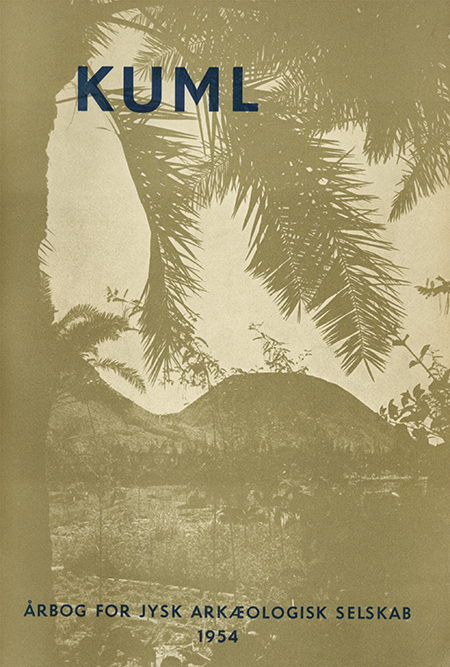En trææske af ler
DOI:
https://doi.org/10.7146/kuml.v4i4.97144Nøgleord:
Wooden box, Trææske, Nyrup Tumulus, Nyrup tuegrav, pottery boxResumé
A Wooden Box in Pottery
In 1952 members of the Jutland Archeological Society undertook the emergency excavation of a ploughed-over tumulus in Nyrup (Sønderholm parish, Himmerland; North Jutland). The tumulus contained as central grave a brokenup cairn burial of the Dagger Period, and covered a ring-wall of large stones 22 meters in diameter, immediately within which were 9 secondary cremation patches.
In one of these was found a pottery box with lid (Fig. 1), 6.4 cms. high, 17.5 cms. long and 10.5 cms. wide. Its sides are concave-convex (Fig. 2). The box could be fastened by means of a rod passing along a groove in the lid and through three perforated projections, one in the centre of each side and on the lid. The underside of the rimmed lid is fire-blackened, perhaps from the cremation patch, or perhaps indicating that the box was used to carry coals. Its shape proves that it was worn on the belt.
The box is dated to the Late Celtic Iron Age by potsherds of a typical Kraghede vessel found in the same patch (Fig. 3). No parallels are known from the Late Bronze Age (Fig. 4). It is probable that boxes of this type were in common use, but were made of wood or hark and therefore perished.
Oscar Marseen.
Downloads
Publiceret
Citation/Eksport
Nummer
Sektion
Licens
Fra og med årgang 2022 er artikler udgivet i Kuml med en licens fra Creative Commons (CC BY-NC-SA 4.0).
Alle tidligere årgange af tidsskriftet er ikke udgivet med en licens fra Creative Commons.


